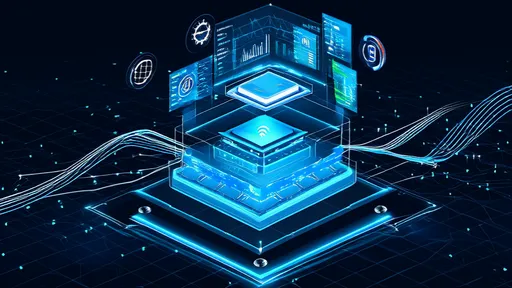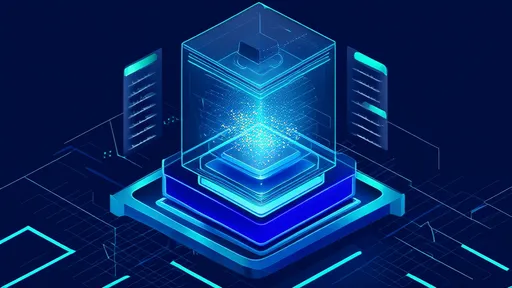The rapid adoption of Database as a Service (DBaaS) has transformed how organizations manage their data infrastructure. By outsourcing database management to cloud providers, businesses gain scalability and operational efficiency. However, this shift also introduces complex security challenges that demand careful configuration and ongoing vigilance.
The Shared Responsibility Model in DBaaS
One of the fundamental aspects of DBaaS security lies in understanding the shared responsibility model. Cloud providers typically secure the underlying infrastructure, including physical servers, network components, and hypervisors. However, customers retain responsibility for securing their data, configuring access controls, and managing encryption. This division of duties often creates confusion, leading to dangerous security gaps when organizations assume their provider handles all protection aspects.
Misconfigurations in DBaaS environments have become a leading cause of data breaches. Research shows that nearly 70% of cloud security incidents stem from customer missteps rather than provider vulnerabilities. Common errors include leaving databases publicly accessible, using default credentials, or failing to enable basic encryption. These issues frequently occur during rapid deployment cycles where security becomes an afterthought.
Authentication and Access Control Fundamentals
Proper identity and access management forms the cornerstone of DBaaS security. Multi-factor authentication (MFA) should be mandatory for all administrative access, with role-based access control (RBAC) implemented to enforce least privilege principles. Many organizations make the mistake of granting excessive permissions during initial setup, creating unnecessary exposure that often goes unaddressed for months or years.
Network security configurations require particular attention in DBaaS environments. While cloud providers offer virtual private clouds and security groups, customers must properly configure these features. Database instances should never be exposed to the public internet unless absolutely necessary, and even then, only with strict IP whitelisting and encrypted connections. Many breaches occur because administrators temporarily enable public access for convenience and forget to disable it.
Encryption Strategies for Data Protection
Encryption plays a dual role in DBaaS security - protecting data at rest and in transit. Most providers offer transparent data encryption (TDE) options that should be enabled by default. However, organizations handling sensitive information should consider additional application-layer encryption for critical data fields. Key management presents another crucial consideration, with many security teams debating between provider-managed keys and customer-controlled alternatives.
Audit logging and monitoring capabilities vary significantly across DBaaS offerings. Organizations must enable and properly configure these features to maintain visibility into database activity. Effective monitoring goes beyond simple log collection - it requires establishing baselines of normal behavior and implementing alerts for suspicious patterns like unusual data exports or after-hours access by privileged accounts.
The dynamic nature of cloud environments introduces unique challenges for database security. Auto-scaling features can spin up new database instances without proper security configurations if templates aren't carefully managed. Similarly, development teams might create database copies for testing purposes without applying the same security controls as production environments. These shadow databases often become vulnerable points in an organization's infrastructure.
Compliance Considerations in DBaaS
Regulatory requirements add another layer of complexity to DBaaS security configurations. Standards like GDPR, HIPAA, and PCI-DSS impose specific controls around data protection, access logging, and geographic restrictions. Organizations must verify that their DBaaS configurations align with these requirements, which may involve disabling certain provider features or implementing additional controls. Many cloud providers offer compliance-ready configurations, but these still require proper activation and ongoing validation.
Backup security represents another frequently overlooked aspect of DBaaS protection. While automated backups provide crucial resilience, they can also become attack vectors if not properly secured. Backup files should receive the same encryption and access control protections as live databases. Additionally, organizations must establish procedures for securely deleting backups when they're no longer needed to comply with data retention policies.
Emerging Threats and Adaptive Defenses
The DBaaS security landscape continues to evolve as attackers develop new techniques targeting cloud databases. Credential stuffing attacks, API vulnerabilities, and sophisticated phishing campaigns all pose significant risks. Security teams must stay informed about emerging threats and regularly reassess their configurations. Many organizations now conduct quarterly DBaaS security reviews in addition to their standard vulnerability scanning routines.
Third-party integrations present another growing security concern in DBaaS environments. Business intelligence tools, ETL pipelines, and custom applications often require database access. Each connection represents a potential vulnerability if not properly secured. Service account credentials should be regularly rotated, and API access should be tightly controlled through dedicated authentication mechanisms rather than shared passwords.
Ultimately, effective DBaaS security requires a combination of technical controls, organizational policies, and ongoing vigilance. While cloud providers continue to enhance their native security features, customers must actively participate in the protection of their data assets. As DBaaS adoption accelerates, organizations that prioritize proper security configurations will be better positioned to reap the benefits of cloud databases while minimizing their exposure to evolving threats.

By /Jul 11, 2025

By /Jul 11, 2025

By /Jul 11, 2025

By /Jul 11, 2025

By /Jul 11, 2025

By /Jul 11, 2025

By /Jul 11, 2025

By /Jul 11, 2025

By /Jul 11, 2025

By /Jul 11, 2025

By /Jul 11, 2025

By /Jul 11, 2025

By /Jul 11, 2025

By /Jul 11, 2025

By /Jul 11, 2025

By /Jul 11, 2025

By /Jul 11, 2025

By /Jul 11, 2025